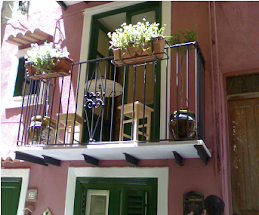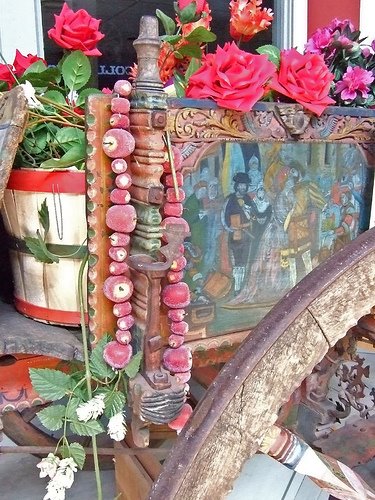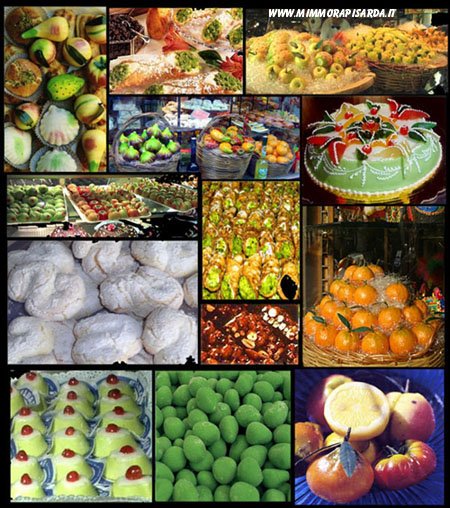
Cuccia is a traditional dessert, served only on Santa Lucia's day (December 13th) in Sicilian households.
All the mothers in every Sicilian neighborhood make cuccia, each in her own unique way. Some are sweeter, some have chocolate, some have citron, some had both. The mothers would prepare bowls of their cuccia for their neighbours and the children are asked to distribute the food.
Who can resist the fresh warm tastes of whole wheat kernels with honey and ricotta? At least, I could not. When my mother was preparing cuccia the night before St Lucia's day, I used to sneak in the kitchen in the middle of the night and eat a large part of the dessert even before it was ready.
As the legend goes, Lucia was a young Sicilian girl from Syracuse who vowed to live as a virgin in devotion to Christ. Her mother, however, arranged a marriage for her to a pagan suitor. To dissuade her mom by way of a miracle, Lucy prayed at the tomb of St. Agatha that her mother's hemorrhage would stop. When the miracle happened, her mother agreed to leave aside the topic of marriage. Lucy's suitor, however, had other ideas, and denounced Lucy as a Christian to the pagan authorities. The authorities went to arrest her, planning on forcing her into prostitution -- but they were unable to budge her, even after tying her to a team of oxen.
She was then tortured by having her eyes torn out. They'd planned on torturing her by fire, too, but the fires kept going out. She was then killed by being stabbed in the throat with a dagger.
Because of the above, St. Lucy is the patron of those with eye problems, and is often depicted carrying her eyes (often on a plate), being tied to a team of oxen, with St. Agatha, or before her judges.
Her remains lay in Syracuse for hundreds of years, were transported to Constantinople, and then to Venice where they were venerated at the Church of San Geremia. Her head was sent to Louis XII of France, and placed in the cathedral of Bourges.
Her name, "Lucia," means "Light," and light plays a role in the customs of her Feast Day.
In Sicily, torchlight processions and Sicily mark her day, and bowls of a cooked wheat porridge known as cuccia are eaten because, during a famine, the people of Syracuse invoked St. Lucy, who intervened by sending a ship laden with grain to the starving population.
Recipe :
1 cup (5 ounces) hard wheat kernels (wheat berries)
Water
1/2 teaspoon salt
1 1/2 cups high-quality whole-milk ricotta (made without gelatin or stabilizers)
Honey to taste
1/2 cup currants or raisins
generous pinch cinnamon (optional)
1. Soak wheat in cold water to cover overnight in the refrigerator. Drain and place in a 3-quart saucepan along with the salt and enough water to cover by 2 to 3 inches. Cook at a slow simmer, partially covered, about 1 hour, or until tender. Kernels will open up slightly.
2. Drain the wheat and combine it with the ricotta. Blend in honey to taste, and the raisins or currants. Turn into a deep serving bowl and dust with cinnamon. Serve warm or at room temperature in small bowls.
Variations
Cuccia with Chocolate: Some Sicilians like warm Cuccia with ricotta, honey, and shaved semi-sweet chocolate to taste. We add, too, 1 to 2 tablespoons chopped candied orange rind.







No comments:
Post a Comment